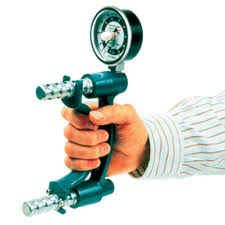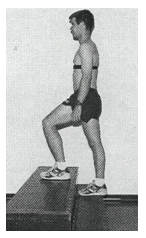
P: (08)9965 0697 F: (08)9964 7528
News
Pre-Employment Physical - Cost Effective and Useful Jul 3rd, 2014
 Pre-employment testing such as radiographic evaluations, physician administered physical exams, and lumbar range of motion, have generally been shown to be ineffective for injury prevention or injury prediction (Jackson, 1994). Strength testing when correlated to job specific tasks has shown a correlation to work-related injuries. Individuals lacking the physical capabilities to work at the level that their job physically required had a significantly increased incidence of low back injuries.
Pre-employment testing such as radiographic evaluations, physician administered physical exams, and lumbar range of motion, have generally been shown to be ineffective for injury prevention or injury prediction (Jackson, 1994). Strength testing when correlated to job specific tasks has shown a correlation to work-related injuries. Individuals lacking the physical capabilities to work at the level that their job physically required had a significantly increased incidence of low back injuries.Controlling the incidence of work-related injuries is economically important for industry, but is of far more importance for the individual employee. Injuries occurring on the job can result in life-altering consequences to workers who depend on their physical well being for their livelihood. Only 2% of individuals with back injuries who have been off work for more than 2 years will ever return to gainful employment. The loss of the ability to work can have a devastating consequence on not only the injured individual but also his or her entire family.
The most efficient methods of controlling workmen’s compensation expenses are geared toward lowering the rate of injury. Several authors have demonstrated that jobs requiring heavier lifting result in a higher incidence of low back pain. One method of controlling work injury rates is to ergonomically re-engineer jobs to be less physically demanding. This approach creates a safer, less physically stressful work environment that benefits the employee. If a job cannot be ergonomically modified to be less physically demanding, it becomes a safety issue to place individuals in a job for which they do not have the physical capabilities to perform.
Aiming to identify and monitor any functioning or health abnormality in prospective employees, pre-employment medical examinations traditionally rely on the classic assessment of specific medical conditions or substance abuse. However, this is not particularly relevant for fitness-for-work decisions. The assessment of fitness for work related to physical and mental job demands seem a better predictor than searching for a medical diagnosis.
There is strong evidence of an association of occupational injury occurrence and certain personal and non-occupational risk factors. In industry, effective injury reduction programs should go beyond traditional methods of job-related ergonomic risk factors and include personal factors such as smoking, weight control, and alcohol abuse (Craig et al, 2006).
 As well as highlighting candidate suitability, pre-employment physical assessments (PEPA's) with a trusted service provider provide a number of other important benefits:
As well as highlighting candidate suitability, pre-employment physical assessments (PEPA's) with a trusted service provider provide a number of other important benefits:- PEPA's provide a mechanism that can be tightened or loosened according to the employment environment.
- PEPA's provide a great place for manual handling education and training for injury prevention advice.
- PEPA's provide a great place to highlight and commence worksite health promotion for high risk employees.
- PEPA's can be used to negotiate a reduction in your insurance premiums when discussing your yearly insurance premiums with insurers.
Central West Health and Rehabilitation has significant experience in designing and providing Cost Effective Pre-employment Physical Assessments. Contact us for more


